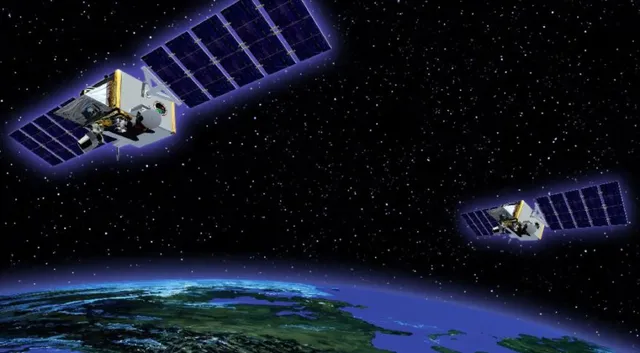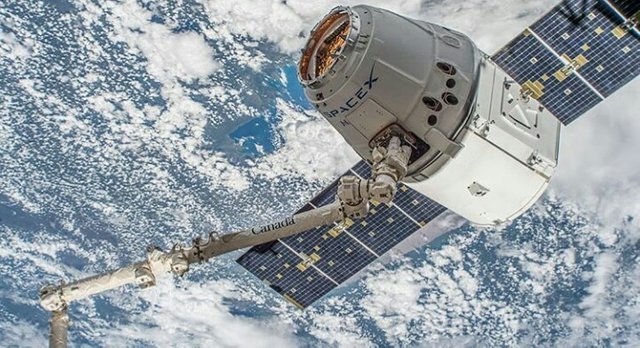Missile-tracking Satellites
NEWS: Missile-Tracking Satellites Are Part of the Plan to Foil Russia's Hypersonic Weapons
The Pentagon is looking at the possibility of deploying sensors in space to fill blind spots in the nation's antimissile defense system.
This not a new idea. Six previous administrations have weighed concepts for space-based sensors but none materialized — the exception being two experimental satellites launched during the George W. Bush presidency that are still in orbit.

The Trump administration is expected to seek funds in 2020 to begin work on a constellation of missile-watching sensors. Congress has hinted it would support the plan in light of new warnings that Russia is testing hypersonic ballistic glider weapons that currently would be undetectable after the initial boost phase of their flight.
To track these ultra-high speed gliders, the vantage point of space would be advantageous, said Tom Karako, senior fellow at the Center for Strategic and International Studies.
"We're hearing a lot of good words about a space sensor layer. But as of right now it has not been translated into programs and budgets,".
The Pentagon is expected to shed light on its future plans in the upcoming Ballistic Missile Defense Review. Defense Department spokeswoman Dana White said last week the review is still going through the approval process and its release is forthcoming.
With both Russia and China said to be close to deploying hypersonic glide vehicles — conceivably with nuclear warheads — the Pentagon does not have a lot of time to study how to build a defense architecture, said Karako. "We have to move out," he said. "We should not wait for the 2020 budget. If we're serious about the need for speed, there should b e an adjustment to the 2019 budget."
Senior defense and military officials have been pushing to get a program started, said Karako. "Mike Griffin [undersecretary of defense for research and engineering] is leaning forward on this pretty hard," he said.
Missile Defense Agency Director Lt. Gen. Samuel Greaves has been a proponent of deploying sensors in space, as has U.S. Strategic Command's Gen. John Hyten.
"MDA could take the lead, but Greaves might bring in the Air Force as well," said Karako. Greaves is a former director of the Air Force Space and Missile Systems Center. "He is a space guy," which makes this a "particularly ripe moment" for MDA and the Air Force to collaborate on this project.

The utility of space sensors has been studied for decades so the Pentagon has plenty of data to draw from. Electronic eyes in low-Earth Orbit would be looking sideways at objects "with the coldness of space behind them," said Karako. "That vantage point is useful. You also can watch objects persistently from birth to death as opposed to ground-based radars which by nature are limited by the horizon."
The Pentagon during the Clinton administration conceived a plan for a 24-satellite LEO constellation to track missiles, but it never got off the ground. The Bush White House ordered two prototype satellites from Northrop Grumman, known as the Space Tracking and Surveillance System. "They're still up there," said Karako. "But they are not very survivable, and two satellites in LEO can't cover the globe."
It is hard to conceive a scenario to defend the United States from hypersonic vehicles that does not involve a layer of sensors in space, Karako said. "You don't have to fill up the Pacific Ocean with lots of radars looking up at the sky. You can do a lot from space."
The problem for the United States is that the existing missile shield designed to thwart a ballistic missile attack cannot handle the "quasi ballistic threat" that would be posed by the next generation of Russian and Chinese weapons. A hypersonic weapon could be launched atop an intercontinental ballistic missile, and it it would glide on top of the Earth's atmosphere to its designated target. The glide vehicles were designed to penetrate U.S. missile defenses by flying around radars and high in the atmosphere above the reach of U.S. interceptor missiles like Patriot. They are aimed "at the gaps and seams of where our missile defenses are able to intercept," said Karako.
The Missile Defense Agency continues to operate both STSS satellites. It requested $37 million in its 2019 budget for operations and sustainment. The satellites were launched in 2007, and have far exceeded their life expectancy. One option for MDA is to build out that constellation. Another is a more distributed architecture of smaller and less expensive satellites.
Karako said the price tag would be significant but it could be offset by spending less money on ground-based sensors. "Populating every island in the Pacific with a radar is not cheap either." The Pentagon has requested $2.5 billion in 2019 for two large radars.
Story provided by SpaceNews
By Sandra Erwins
Hi, I found some acronyms/abbreviations in this post. This is how they expand:
You got a 3.05% upvote from @upmewhale courtesy of @fanservice!
Earn 100% earning payout by delegating SP to @upmewhale. Visit http://www.upmewhale.com for details!